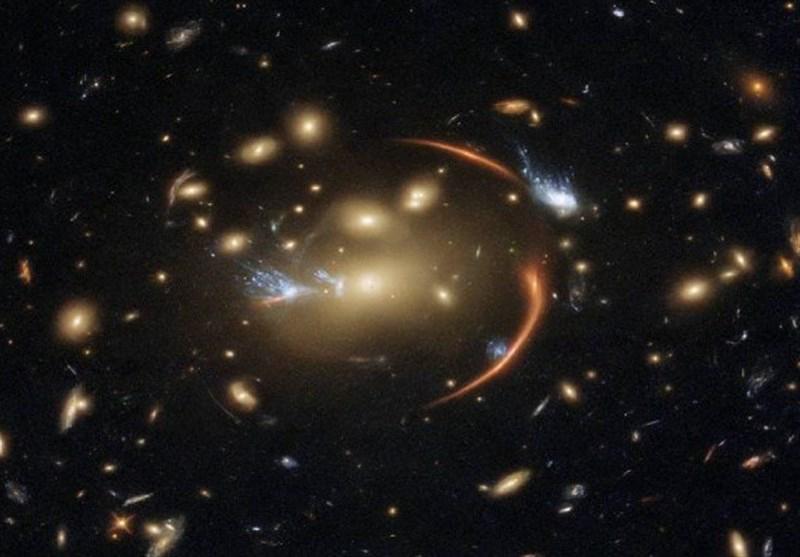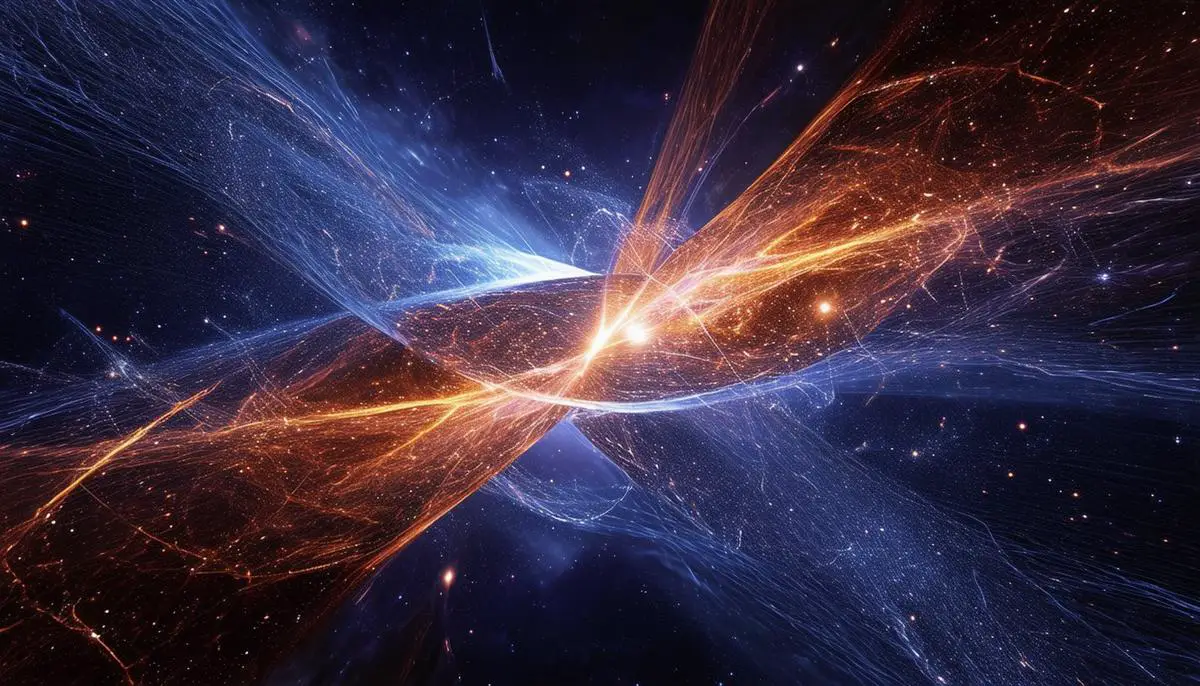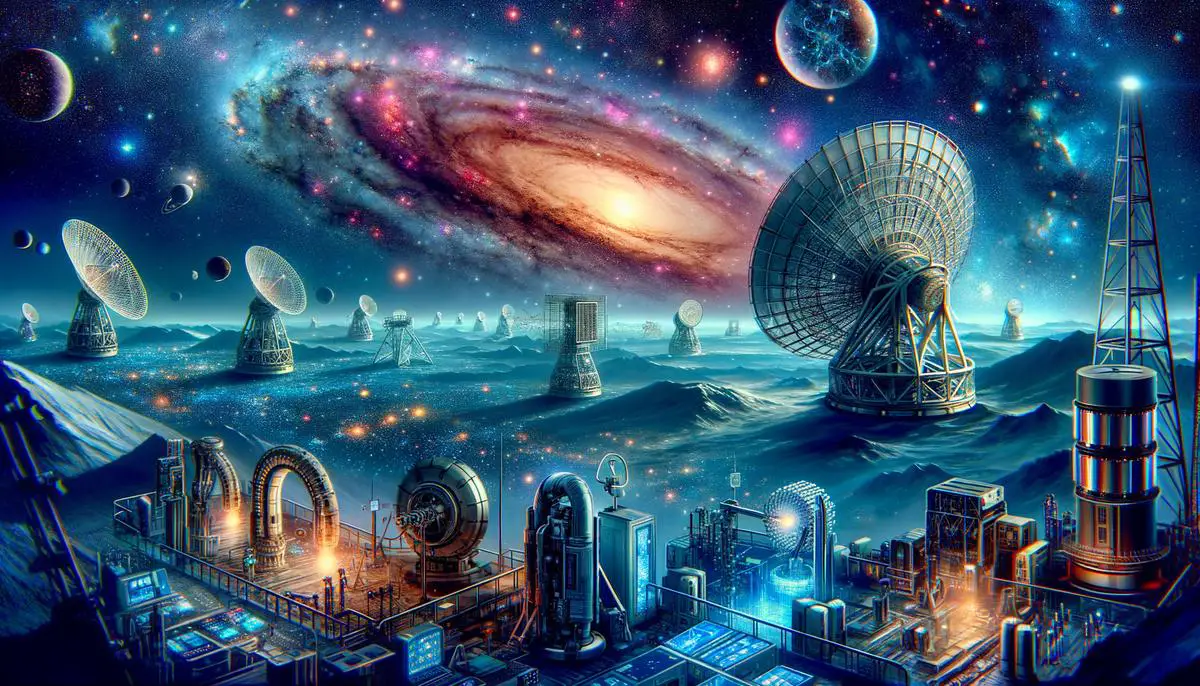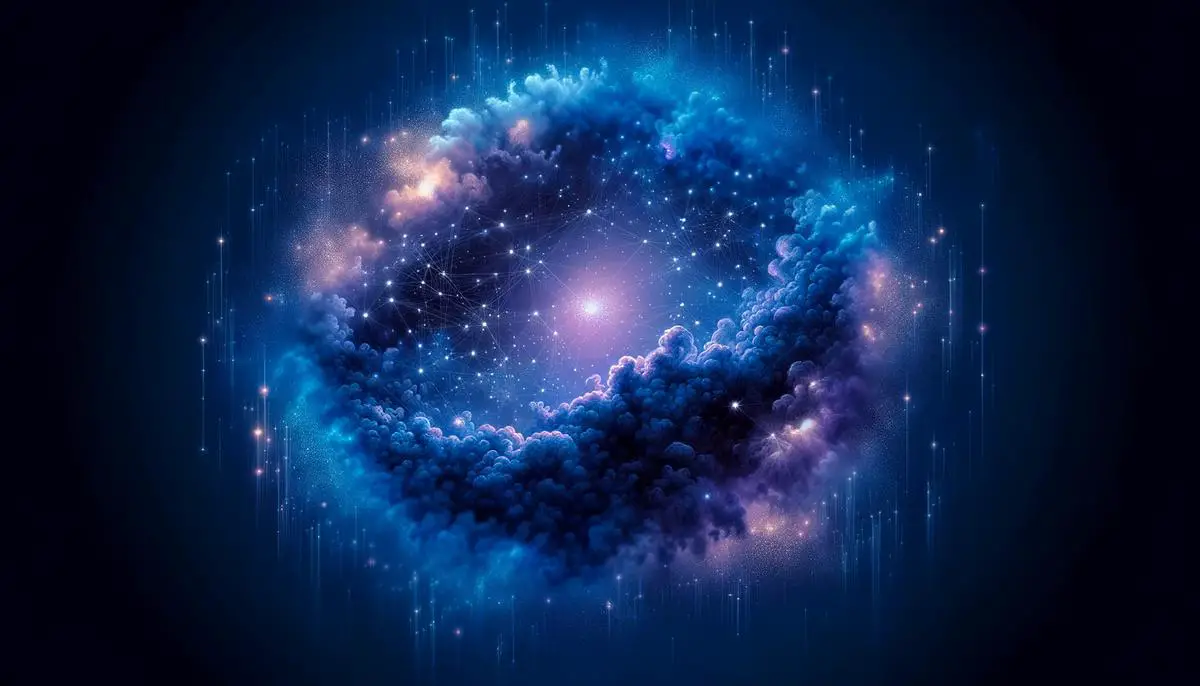Current Understanding of Dark Matter and Dark Energy
Dark matter and dark energy are two of the most perplexing mysteries in the universe. Dark matter, comprising about 27% of the universe's mass-energy content, doesn't emit, absorb, or reflect light, making it invisible. We've inferred its presence by observing its gravitational effects, such as the bending of light from distant stars and galaxies.
Dark energy accounts for approximately 68% of the universe and is believed to be responsible for its accelerated expansion. Observations of supernovae in distant galaxies revealed that the universe's expansion rate is speeding up, contrary to earlier expectations.
Einstein's theory of general relativity and his proposed cosmological constant (Λ) form the basis of the Lambda-CDM model, which describes how dark matter and dark energy drive cosmic evolution. However, recent observations suggest potential discrepancies. For instance, data on the growth rate of large cosmic structures imply that dark energy may be slowing down the clumping of these structures more than the Lambda-CDM model predicts.
Various Models of Dark Energy:
- Cosmological constant (most straightforward)
- Modifications to general relativity
- Additional fields influencing expansion
- Interacting dark matter and dark energy models
Ongoing experiments examine the cosmic microwave background (CMB) and baryon acoustic oscillations (BAO) using advanced telescopes like the Planck satellite and the Dark Energy Survey. Supercomputers run simulations to map the distribution of dark matter and the behavior of dark energy over time, comparing these with observed data to refine existing models.
Despite these efforts, direct detection of dark matter remains elusive, and the exact mechanism driving dark energy is still a puzzle. Various astronomical surveys and particle physics experiments are underway to investigate these questions further, with instruments like the Vera C. Rubin Observatory and the James Webb Space Telescope expected to provide more insights.1

The ΛCDM Model and Its Limitations
The ΛCDM (Lambda Cold Dark Matter) model is the prevailing cosmological paradigm, combining Einstein's cosmological constant (Λ) with cold dark matter. It successfully explains a broad range of phenomena, from the cosmic microwave background (CMB) radiation to the large-scale structure of the universe.
Despite its successes, the ΛCDM model faces challenges:
- The fine-tuning problem: Questions why the cosmological constant has such a specific, small value.
- The cosmic-coincidence conundrum: Asks why the densities of dark energy and dark matter are comparable in the present cosmic era, given their different rates of evolution.
Recent observations have hinted at discrepancies, such as the slower-than-predicted growth rate of large cosmic structures. This has led researchers to propose scenarios where dark matter and dark energy interact in novel ways.
"As we continue to probe the cosmos, we must remain open to revising our theories in light of new evidence."
To address these limitations, various extensions and modifications to the ΛCDM model are being explored. Theories involving scalar fields, often called quintessence, provide a dynamic alternative to the static cosmological constant. Others propose modifications to general relativity, such as adding extra dimensions or altering the theory's equations.
Instruments like the Vera C. Rubin Observatory and the James Webb Space Telescope are poised to offer unprecedented insights, potentially revealing facets of the universe that lie beyond the purview of the ΛCDM model.2
Interacting Dark Matter and Dark Energy Models
To address the limitations of the ΛCDM model, scientists are exploring the possibility that dark matter (DM) and dark energy (DE) might interact. This perspective could reconcile some of the discrepancies observed in cosmological data and potentially reshape our understanding of the universe's large-scale dynamics.
Introducing interactions between dark matter and dark energy adds complexity that could provide more nuanced explanations for phenomena like the fine-tuning and cosmic-coincidence problems. One concept suggests that dark energy could decay into dark matter or vice versa, explaining why their densities appear comparable today.
Forms of DM-DE Interactions:
- Coupling constants
- Modifications to Einstein's field equations
- Coupling via a scalar field ("quintessence")
Observational data from the cosmic microwave background, galaxy clustering, and supernova distances are crucial for testing these models. Instruments such as the Dark Energy Survey, the Vera C. Rubin Observatory, and the James Webb Space Telescope are vital for collecting high-precision data needed to evaluate interacting models' predictions.
Recent studies have focused on identifying signs of DM-DE interactions through gravitational lensing effects. Non-linear interaction models have also garnered attention for their potential to offer rich phenomenological descriptions of the universe's large-scale behavior.
Despite the exciting prospects, these models face challenges, particularly in empirical validation. High-precision data from next-generation telescopes and ongoing refinement of computational models will be crucial in this pursuit.
Interacting dark matter and dark energy models offer potential solutions to issues in the ΛCDM model, proposing new mechanisms for cosmic evolution. The interplay between theoretical innovation and observational precision promises significant advancements in our understanding of the universe's fundamental makeup.3

Observational Evidence and Challenges
Observations are fundamental to understanding dark matter (DM) and dark energy (DE). Various advanced telescopes and surveys provide extensive data that cosmologists analyze to substantiate or refute theoretical predictions.
The Hubble Space Telescope (HST) has been instrumental in observing type Ia supernovae, which revealed the accelerating expansion of the universe. These observations initially pointed to the existence of dark energy and still provide critical data in testing new interacting models. Hubble's precise measurements of the cosmic expansion rate, or the Hubble constant (H₀), serve as a benchmark against which models can be calibrated.
However, discrepancies have arisen. The Hubble constant as measured by HST often shows a higher value compared to that derived from the cosmic microwave background (CMB) observations by the Planck satellite. This "Hubble tension" is one of the pressing challenges in current cosmology, and DM-DE interactions are potential candidates for explaining this inconsistency.
The Atacama Large Millimeter/submillimeter Array (ALMA) has contributed by offering detailed views of galaxy clusters like Abell 3827. ALMA's higher resolution in capturing distorted infrared light from background galaxies revealed that most of the dark matter stayed with its galaxy, posing further questions about the nature and behavior of dark matter.
The Planck satellite's detailed mapping of the CMB provides another critical test for interacting models. The tiny fluctuations in the CMB encode information about the early universe and the processes that shaped its evolution. Any viable DM-DE interaction model must reconcile these fluctuations with observed data.
The upcoming Vera C. Rubin Observatory promises to revolutionize our observational capabilities. Its wide-field survey will capture unprecedented amounts of data on the universe's large-scale structure, providing crucial insights into dark matter distributions and potential interactions with dark energy.
Key Observational Challenges:
- Secondary lensing effects
- Inherent instrumental limitations
- Vast intricacy of cosmic phenomena
- Systematic uncertainties in supernovae observations
- Interpretation of gravitational lensing data
Gravitational lensing studies add another layer of intricacy. While they offer indirect evidence for dark matter's presence through light distortion from distant galaxies, interpreting these distortions accurately requires assumptions about the distribution and properties of intervening dark matter. As instruments like the James Webb Space Telescope (JWST) come online, the hope is that higher resolution imaging will reduce these uncertainties.
Additionally, phenomena like "cosmic voids," large empty spaces in the universe, could provide additional tests for interacting models. How DM and DE influence these voids can yield insights into their interactions. The large datasets from current and forthcoming surveys will aid in examining void dynamics to validate theoretical predictions.
While observational evidence continues to grow, it simultaneously introduces new challenges and puzzles. Discrepancies between different observational datasets necessitate continual refinement of DM-DE interaction models. These models remain a compelling avenue, promising to bridge gaps in our understanding of the universe's accelerated expansion and structure formation.
Implications for Cosmology and Future Research
A deeper understanding of DM-DE interactions carries significant implications for cosmology. These models suggest a dynamic, interactive cosmos where the behavior of its two most mysterious components is more intricate than previously thought. This notion could redefine how we perceive the universe's makeup, shedding light on the fundamental nature of these dark entities.
If dark matter and dark energy interact, it could influence the distribution and formation of galaxies and cosmic structures. This paradigm shift means that our current models of galaxy formation, based on non-interacting dark matter, might require revisions. The anticipated outcomes include alterations in the rate of structure formation, changes in the cosmic web's morphology, and potential variations in the timing of various cosmic epochs.
Such interactions also have the potential to resolve ongoing cosmological tensions, like the Hubble constant discrepancy. If dark energy decays into dark matter, or if there is an exchange of energy between them, it could naturally adjust the expansion rate observed in different cosmic eras.
Future Research Directions:
- Next-Gen Telescopes and Surveys: The Vera C. Rubin Observatory's Legacy Survey of Space and Time (LSST) will map billions of galaxies, offering a panoramic view of the universe's structure.
- Cosmic Microwave Background (CMB) Studies: Continued observations from Planck and future CMB experiments will probe minute temperature fluctuations and polarization patterns.
- Gravitational Wave Observations: Instruments like LIGO and Virgo, along with future observatories like the Einstein Telescope, will explore the universe through gravitational waves.
- High-Precision Redshift Surveys: Projects like the Dark Energy Spectroscopic Instrument (DESI) will create detailed maps of galaxy redshifts.
- Astroparticle Physics: Experiments in particle physics, such as the Large Hadron Collider (LHC) and underground dark matter detectors, aim to uncover direct evidence of dark matter particles.
- Advanced Simulations: High-performance computing will play an integral role in simulating complex dark matter and dark energy interactions.
- Multi-Messenger Astronomy: Combining data from different sources—optical, X-ray, infrared, and gravitational waves—offers a holistic view of the cosmos.
As our observational tools become more sophisticated, the universe's dark constituents may slowly reveal their secrets, transforming our cosmic understanding and propelling humanity into a new age of discovery.
"The universe is not only stranger than we imagine, it is stranger than we can imagine." – Sir Arthur Eddington

In the quest to understand the universe, the interplay between dark matter and dark energy stands as a pivotal area of research. By probing their potential interactions, we edge closer to unraveling the cosmos's most profound mysteries, continually pushing the boundaries of our knowledge.
![]()
